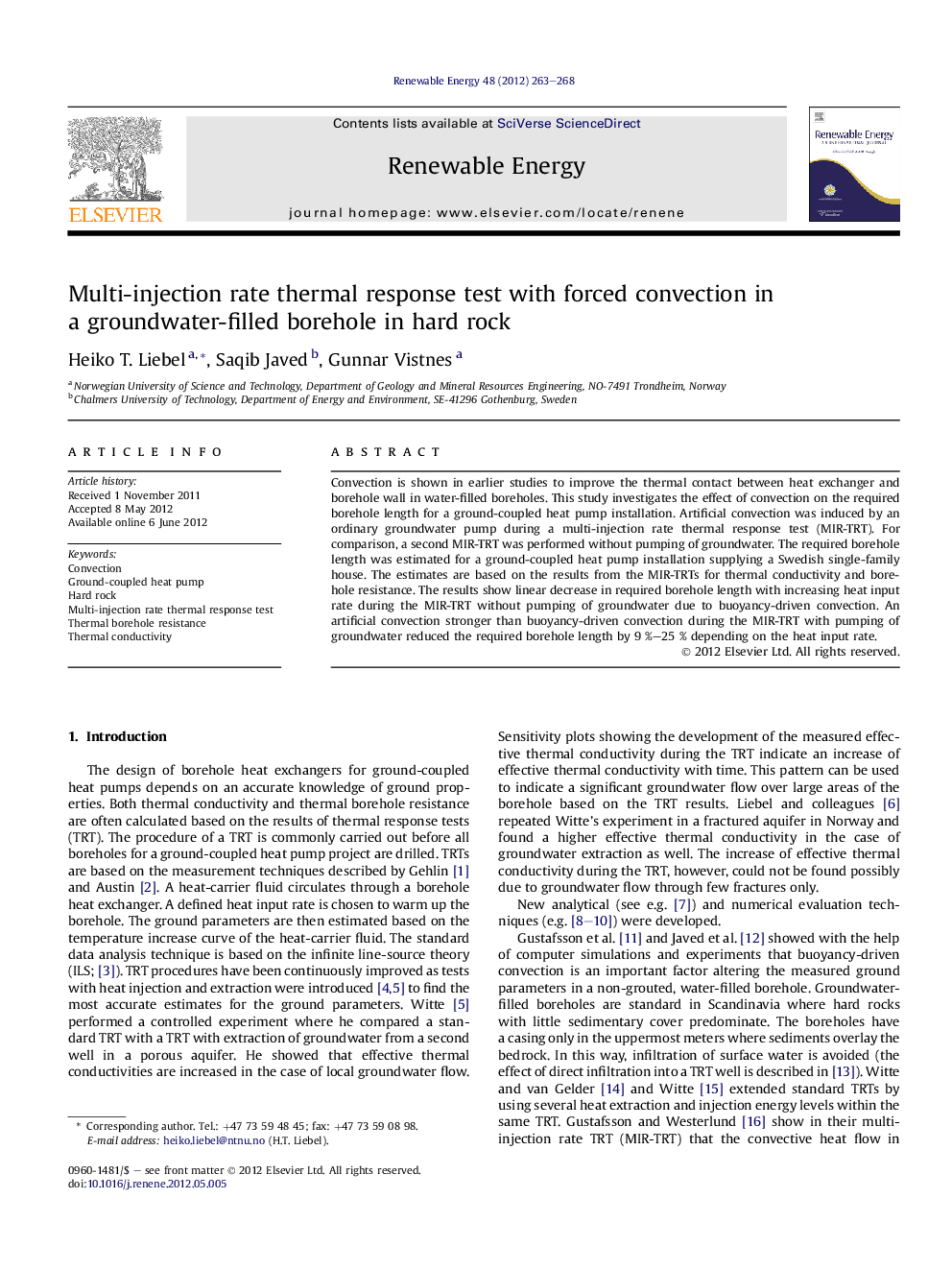| Article ID | Journal | Published Year | Pages | File Type |
|---|---|---|---|---|
| 300878 | Renewable Energy | 2012 | 6 Pages |
Convection is shown in earlier studies to improve the thermal contact between heat exchanger and borehole wall in water-filled boreholes. This study investigates the effect of convection on the required borehole length for a ground-coupled heat pump installation. Artificial convection was induced by an ordinary groundwater pump during a multi-injection rate thermal response test (MIR-TRT). For comparison, a second MIR-TRT was performed without pumping of groundwater. The required borehole length was estimated for a ground-coupled heat pump installation supplying a Swedish single-family house. The estimates are based on the results from the MIR-TRTs for thermal conductivity and borehole resistance. The results show linear decrease in required borehole length with increasing heat input rate during the MIR-TRT without pumping of groundwater due to buoyancy-driven convection. An artificial convection stronger than buoyancy-driven convection during the MIR-TRT with pumping of groundwater reduced the required borehole length by 9 %–25 % depending on the heat input rate.
► Two different TRT evaluation models were compared successfully to each other. ► Required borehole lengths decrease with increasing heat input rates due to increasing buoyancy-driven convection. ► Required borehole lengths are shorter with than without pumping of groundwater. ► Forced convection may be used in ground-coupled heat pump systems to reduce required borehole lengths.
